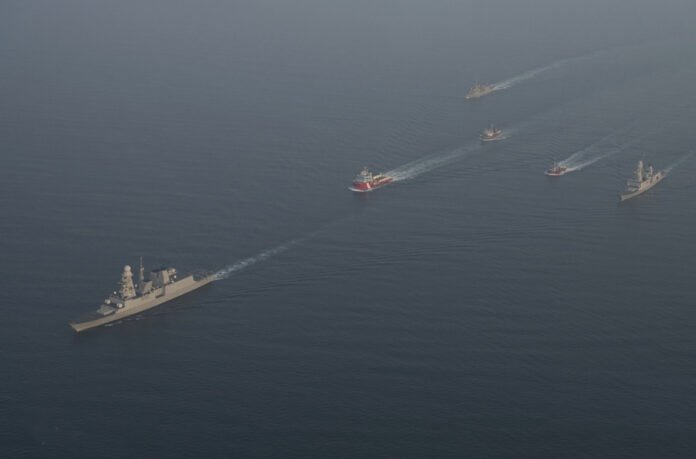Tel Aviv: The continued aggression of the Houthi rebels in Yemen is behind the formation of a joint Saudi Arabian – Egyptian naval force in the Red sea. Israeli sources said that it is expected that the new joint force will be fully coordinate with the US fifth fleet that operates in the region.
The Israeli navy is very active in the region but an official confirmation for potential cooperation with the new joint force is still awaited.
Egypt and Saudi Arabia have formalised their naval cooperation in the Red Sea, signing a new protocol and launching efforts to deepen joint maritime operations and operational integration in September 2025. Both countries face mounting maritime security threats in the Red Sea, including the risk of attacks on shipping routes by armed groups and regional instability stemming from the Red Sea crisis and Houthi activity in Yemen.
The latest cooperation is designed to institutionalise military coordination and move beyond periodic joint exercises toward establishing sustained joint operational capabilities.
The Egyptian Navy Commander and the Saudi Chief of Staff of the Royal Saudi Naval Forces signed a naval cooperation protocol in Alexandria, focusing on mutual training, expertise transfer, and adoption of advanced armament systems.
High-level delegations toured naval facilities, reviewed newly introduced equipment, and discussed education and training for cadets in line with international standards. Officials also established working groups to assess Red Sea navigation challenges and coordinate implementation of bilateral agreements.
The agreement sets the stage for forming joint naval units, which will coordinate maritime security missions in the Red Sea region, including escorting commercial vessels, countering maritime threats, and ensuring Port State Control in line with regional standards. The integration will likely involve the use of advanced platforms, including frigates and specialised naval teams, and leverage existing cooperation in multinational drills.
The joint force marks a significant step in regional security, aiming to protect crucial shipping lanes—including Suez Canal approaches and oil supply routes—while deterring asymmetric and state-based threats. It also underscores Egypt’s and Saudi Arabia’s position as leading maritime powers in Arab security architecture, with Egypt’s Berenice Naval Base and Saudi facilities acting as operational hubs.
-The writer is an Israel-based freelance journalist. The views expressed are of the writer and do not necessarily reflect the views of Raksha Anirveda






